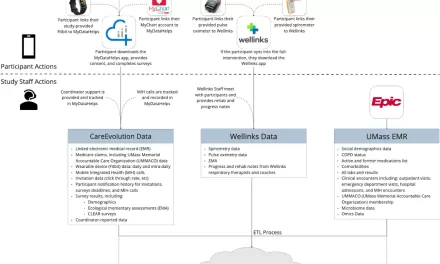Atlanta, GA – Imagine a future where invasive medical procedures are replaced with a simple smartphone scan. Thanks to groundbreaking research, this vision may soon become a reality. Scientists are developing technology that could allow smartphones to diagnose diseases using infrared scans, potentially revolutionizing personalized medicine.
Regents’ Professor of Physics Unil Perera at Georgia State University is at the forefront of this innovation. He envisions a future where individuals can monitor their health from the comfort of their homes. “In 10 to 15 years, I hope to see this technology in your smartphone, and in your everyday life,” Perera stated. “Imagine being able to take your own health readings from the comfort of your home. The potential for early detection and personalized medicine is enormous.”
Perera’s research centers on Attenuated Total Reflectance-Fourier Transform Infrared (ATR-FTIR) spectroscopy. This technique uses infrared light to analyze the molecular composition of materials, revealing details invisible to the naked eye. By applying this method to medical diagnostics, diseases like melanoma can be detected early through infrared scans.
Perera’s work has already demonstrated the potential for advancing diagnostics for various conditions, including melanoma, lymphoma, colitis, and other cell activations. His current research focuses on tracing disease progression, aiming to develop benchmarks for clinical settings. This could enable physicians to monitor treatment efficacy and respond rapidly to changes in a patient’s condition.
“The beauty of ATR-FTIR spectroscopy lies in its ability to provide detailed molecular data and identify disease progression without needing invasive procedures,” Perera explained. “The hope is to develop technology that can be embedded in everyday devices, allowing individuals to monitor their health without stepping into a clinic.”
Perera’s approach could transform diagnostics for a wide range of conditions, from the common cold to colon cancer.
In addition to his research, Perera is dedicated to mentoring the next generation of scientists. With over 30 years of teaching experience at Georgia State, he encourages students to explore physics with curiosity and without fear. His lab fosters a collaborative environment, bringing together experts from physics, engineering, chemistry, biology, and mathematics.
“Physics is all about curiosity,” he says. “It’s about asking, ‘Why and How?’ and then pushing boundaries to find the answers.”
Perera, a fellow of IEEE, APS, and SPIE, emphasizes the multidisciplinary nature of modern scientific discovery and the broad applications of physics.
“Studying physics opens doors to more than just one field. It’s the key to data science, semiconductors and even the companies shaping the future like Nvidia,” Perera says. “With curiosity and a willingness to ask questions, physics can take you anywhere, from computer programming to cutting-edge engineering. It’s not just about what you learn, but what you can create.”
Provided by Georgia State University.
Disclaimer: This article discusses potential future applications of current research. While the technology shows promise, it is still in development, and there is no guarantee that smartphones will be able to diagnose diseases using infrared scans in the manner described. The information provided should not be interpreted as medical advice. Always consult with a qualified healthcare professional for any health concerns or before making any decisions related to your health or treatment.1












